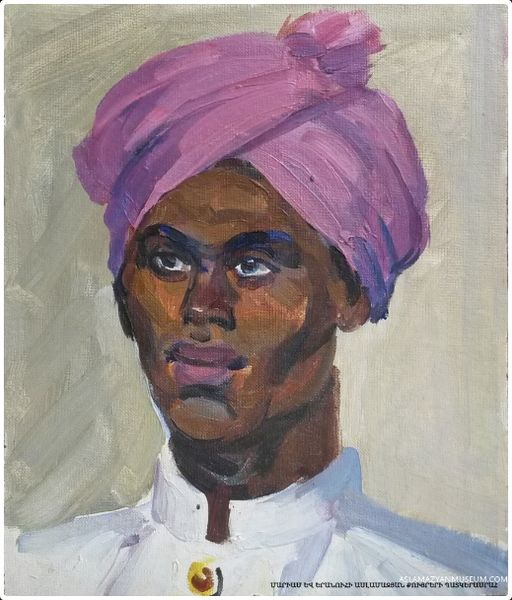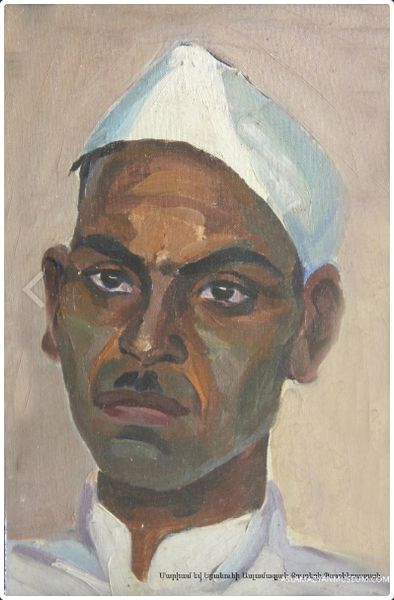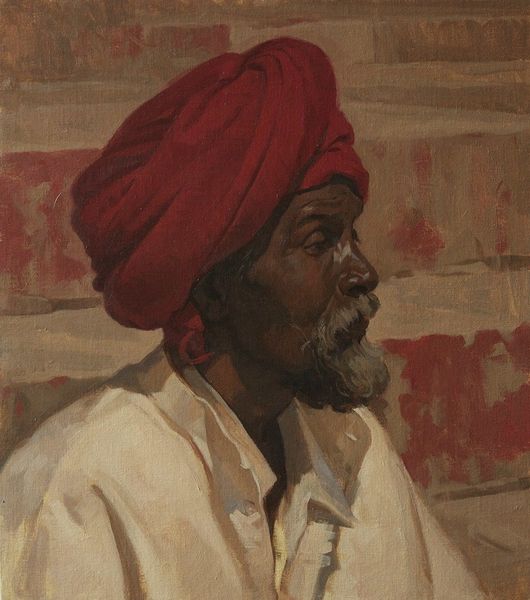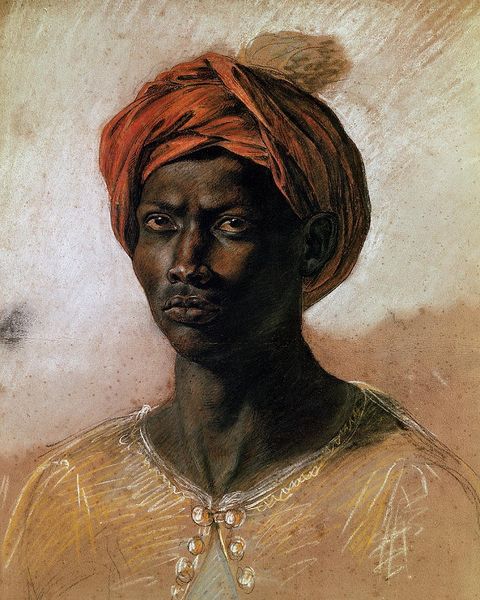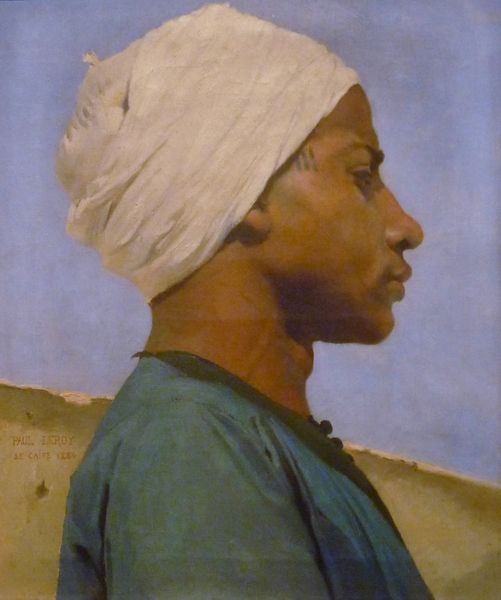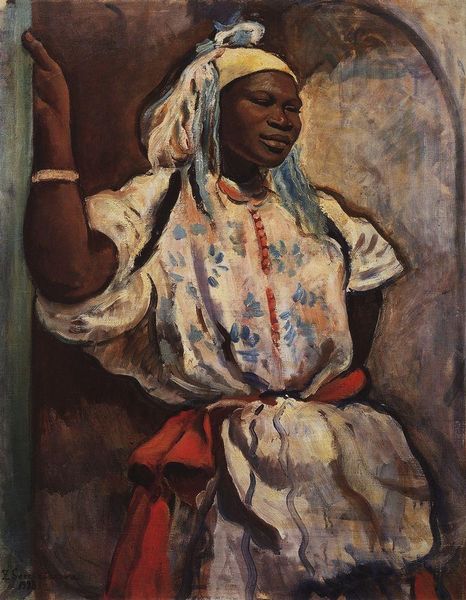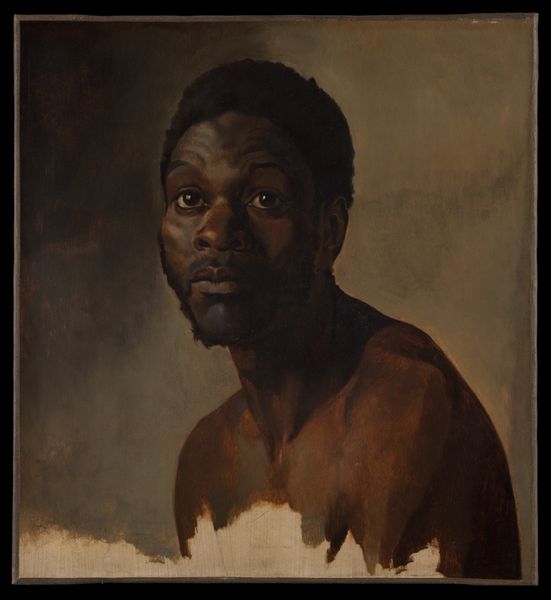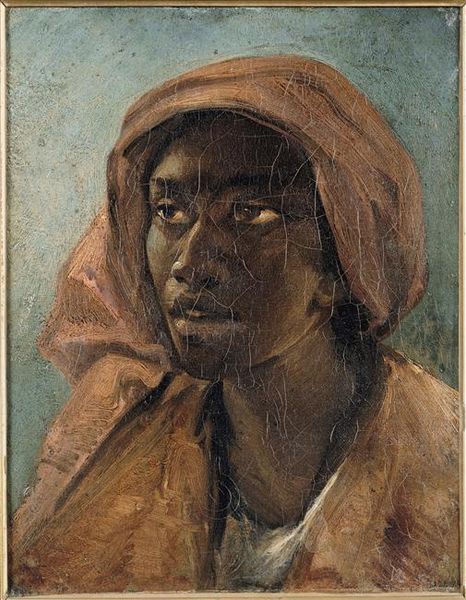
oil-paint
#
portrait
#
oil-paint
#
oil painting
#
orientalism
#
realism
Copyright: Public domain
Curator: Looking at this portrait, I'm immediately struck by the subject’s gaze; there's an intense directness there, wouldn't you agree? The colors, though muted, lend the piece a very imposing presence. Editor: I'd say that the direct gaze evokes a sense of pride, or perhaps defiance, particularly considering the history of how Black men were often depicted – or rather, not depicted – in art. This work, titled "Black Man" and attributed to Konstantinos Maleas, immediately raises questions about representation and power dynamics. Curator: Precisely. Now, let’s think about the style. It's identified as Realism and even Orientalism, but to what extent do labels truly encapsulate the essence of the piece? Does it offer a true reflection of the subject, or does it subtly engage with colonial perspectives? Editor: Absolutely. The layering of labels complicates our understanding. Considering Orientalism, how does this image partake in or resist the visual tropes associated with the "Orient"? Does it reinforce stereotypes or challenge them? Curator: It seems to tread a fine line, perhaps unconsciously so. The subject's turban and clothing nod to Orientalist themes, yet there's a grounded realism in the man’s face, an undeniable humanity that transcends simplistic categorizations. Editor: Exactly. The absence of a specified date further complicates our ability to fully historicize and situate this painting. Without it, the socio-political reading becomes all the more critical. Who was this man? What was his story? How would the viewers at the time have read this representation, compared to a modern, more conscious viewing? Curator: The social context of both the painting's creation and its reception heavily informs its impact and the meaning we ascribe to it today. As an image in the 21st century, how do its textures interact with current visual tropes around identity and representation? Editor: It brings to the surface questions we're still grappling with – who gets to control the narrative, how are marginalized people visualized, and how do we avoid perpetuating historical biases? A portrait such as this challenges us to look critically at our own assumptions and the power structures that inform them. Curator: Indeed. And I believe that dialogue – that persistent questioning – is crucial for extracting richer understandings and a more informed vision for art's future roles in society. Editor: Yes, a potent image, stimulating conversation and continued critical engagement.
Comments
No comments
Be the first to comment and join the conversation on the ultimate creative platform.
